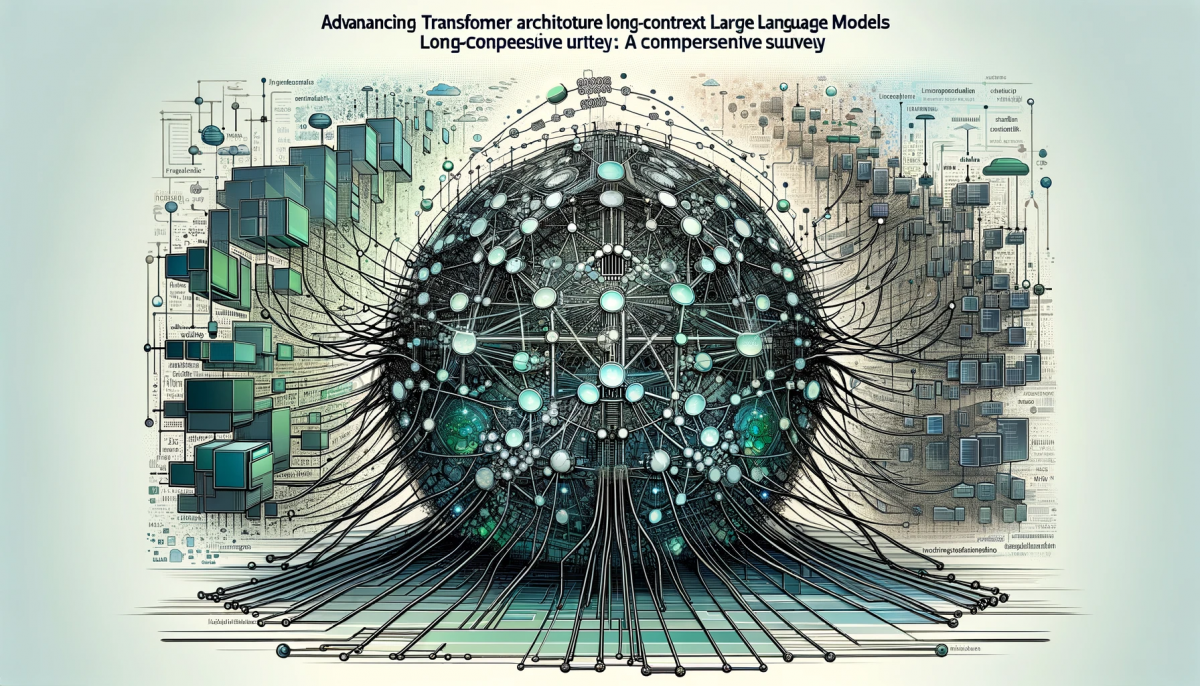Key Points
1. The paper addresses the limitations of current Large Language Models (LLMs) in handling long-context prompts and presents a comprehensive survey focusing on the advancement of model architecture in Transformer-based LLMs.
2. The authors provide an overview of the advancement of Transformer architecture specifically targeting long-context capabilities in LLMs.
3. The study explores the challenges faced by LLMs when engaging with extensive sequences and discusses the advancements in breaking the barriers of context length across all stages for more intricate and scalable Transformer-based LLMs.
4. The paper presents a holistic taxonomy to categorize different methodologies aimed at enhancing long-context capabilities of LLMs, including efficient attention, long-term memory mechanisms, extrapolative positional embeddings, context processing, and miscellaneous methods.
5. It delves into various strategies for optimizing attention mechanisms to achieve linear complexity, reduce computational demands, and extend the effective context length boundary for LLMs during inference.
6. The study introduces various methods involving recurrent mechanisms to address the inherent limitation of in-context working memory and explores alternate cache designs for improving long-term memory storage and retrieval.
7. Additionally, it examines approaches that leverage external memory banks to enhance long-term memory by retrieving relevant context information from stored documentation or knowledge bases.
8. The authors discuss the challenges and potential avenues for future research in addressing the length extrapolation dilemma and enhancing the length generalization capabilities of Transformer-based language models.
9. The paper discusses the rethinking of positional encodings as β-Encoding and provides insights into the design and theoretical interpretation of Sinusoidal Positional Embeddings (PEs) in Transformer models.
Summary
The paper "Advancing Transformer Architecture in Long-Context Large Language Models: A Comprehensive Survey" provides a thorough analysis of methods to enhance the capabilities of Large Language Models (LLMs) based on the transformer architecture, with a focus on handling long-context scenarios in language modeling. The paper discusses the limitations of current LLMs in handling longer-context prompts and presents a comprehensive taxonomy of techniques aimed at addressing these limitations.
Methodologies for Enhancing Long-context Large Language Models
The review covers various methodologies, including optimizing attention mechanisms to reduce computational demands, introducing long-term memory mechanisms to compensate for the lack of efficient and effective memory in LLMs, improving length generalization with extrapolative positional embeddings, and employing context pre/post-processing. The study also explores the challenges in handling extensive contexts and provides potential future research directions in this field.
Advancements in Transformer-based Models
In addition, the paper discusses the advancements in deep learning, particularly Transformer-based models like BERT, GPT, and their variants, and their extensive applications in natural language processing tasks. It highlights the core design of the Transformer architecture and its success in capturing global dependencies of tokens across the input sequence, while also addressing the quadratic time and space complexities with respect to input sequence length.
Categorization of Recent Survey Works
The paper further categorizes recent survey works on long-context LLMs, presenting a holistic taxonomy to navigate the landscape of Transformer upgrades on architecture to solve the challenges of handling long-context input and output. It touches upon various approaches to enhancing long-context capabilities, such as efficient attention, long-term memory, extrapolative positional embeddings, context processing, and miscellaneous methods such as specific pre-training objectives, mixture of experts, quantization, and parallelism.
Evaluating Existing Surveys and Identifying Research Gaps
It also acknowledges the existing surveys in the field and discusses their limitations, emphasizing the lack of comprehensive studies to review the literature on the advancement in breaking the barriers of context length across all stages for more intricate and scalable Transformer-based LLMs by exploring the Transformer’s architecture from an operational perspective.
Summary and Future Directions
Overall, the paper provides a comprehensive overview of the methodologies used to enhance long-context Large Language Models (LLMs) and offers insights into the challenges and potential future directions in this domain. It addresses the need for efficient handling of long-text scenarios and emphasizes the importance of advancements in Transformer architecture to empower LLMs with effective long-context capabilities.
Reference: https://arxiv.org/abs/2311.12351
